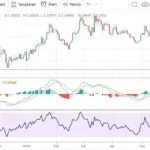Below is a forward-looking article on the Global Market Outlook for the Next Quarter, assessing key drivers, risks, and investment implications. If you prefer a region-specific version (e.g. Asia, U.S., Europe), I can adapt this further.
Global Market Outlook for the Next Quarter
As we head into the upcoming quarter, global markets face a delicate balance of positive forces and structural headwinds. Bouts of volatility are likely, yet pockets of opportunity remain—especially for investors who remain selective, diversified, and nimble. Below is a breakdown of the economic backdrop, market themes, and strategic considerations for the next few months.
1. Economic Backdrop: Slowing Growth, Easing Inflation
Global Growth & Inflation
- The International Monetary Fund (IMF) projects global growth of around 3.0 percent in 2025, with a modest acceleration to 3.1 percent in 2026. (IMF)
- Inflationary pressures are gradually easing, but core inflation remains sticky in many regions. (IMF)
- Risks remain skewed to the downside: renewed trade frictions, policy missteps, or geopolitical shocks could derail momentum. (IMF)
Monetary Policy
- Developed markets are likely to maintain relatively tight monetary settings. Rate cuts may be delayed or gradual rather than aggressive. (BlackRock)
- In the U.S., the Federal Reserve may lean toward a cautious posture—watching inflation data and labor trends closely before pivoting. (Morgan Stanley)
- Emerging markets face a delicate challenge: balancing domestic growth pressures and capital flow volatility if global rates remain elevated.
Trade, Supply-Chains & Energy
- Global trade growth is showing resilience, partly driven by demand for technology and AI-related goods. The World Trade Organization (WTO) has revised upward its trade growth projections. (Wall Street Journal)
- In energy markets, OPEC+ plans modest production increases, adding to the risk of supply overshangs. (Reuters)
- Meanwhile, demand softness concerns have led institutions like J.P. Morgan to revise their oil price forecasts downward. (Reuters)
2. Key Market Themes to Watch
Valuation & Concentration Risk
Equity valuations are elevated in many markets, especially in sectors concentrated among large-cap “megacap” names. Some analysts draw parallels with past tech bubbles, cautioning about valuation compression if earnings growth disappoints. (Fiduciary Trust)
Volatility & Rotation
Market leadership may rotate away from overbought sectors (e.g. tech) toward more defensive or cyclical plays. Volatility is likely to remain a factor, driven by macro surprises or policy shifts. (Morgan Stanley)
Regional Diversification
- International equities have outperformed in parts of 2025, reinforcing the case for geographical diversification. (fidelity.com)
- In Japan, expectations point to relatively stable monetary policy and moderate inflation. (russellinvestments.com)
- In Australia and New Zealand, bonds and local equities may offer more value compared to overextended global names. (russellinvestments.com)
Macro Surprises & Policy Risk
Unanticipated central bank actions, currency volatility, or sudden geopolitical events could unsettle markets. Staying alert to headline risk will be vital.
3. Strategic Implications for Investors
Positioning for Moderation
- Stay diversified. Blend growth and defensive exposures. Don’t overconcentrate in a few high-flying names.
- Focus on quality. Companies with strong balance sheets, pricing power, and earnings visibility may fare better in choppy conditions.
- Manage duration. With bond yields still elevated, selectively adding duration (longer-dated bonds) may be a prudent hedge—though timing matters.
- Embrace tactical flexibility. Be ready to rotate between sectors or regions as data surprises arrive.
- Hedge where appropriate. Using options or protective instruments can help manage downside risk in volatile markets.
Areas to Watch Closely
- Inflation and wage data, especially in the U.S. and Europe.
- Central bank minutes or speeches that hint at future policy pivots.
- Earnings surprises—especially among tech, consumer, and industrial sectors.
- Geopolitical flashpoints (e.g. trade disputes, energy conflicts) that could disrupt markets abruptly.
4. Risks to Monitor
| Risk | Description | Potential Impact |
|---|---|---|
| Persistent inflation | Inflation refuses to recede as expected | Rate cuts delayed; earnings squeezed |
| Geopolitical shock | Trade wars, conflicts, or supply disruptions | Sharp market drawdowns |
| Policy misstep | Central banks overshoot or spook markets | Volatility, especially in fixed income |
| Earnings underperformance | Companies miss forecasts | Valuation re-rating, sector rotation |
Conclusion
Over the next quarter, global markets appear poised for a mixed but navigable path. While growth is slowing and risks linger, the potential for selective upside remains. Investors who stay diversified, disciplined, and alert to macro shifts will be better positioned to navigate volatility and capture opportunities.
If you like, I can also generate a chart-based outlook or a region-specific version (e.g. Southeast Asia, Malaysia) to make it even more actionable. Want me to do that?















